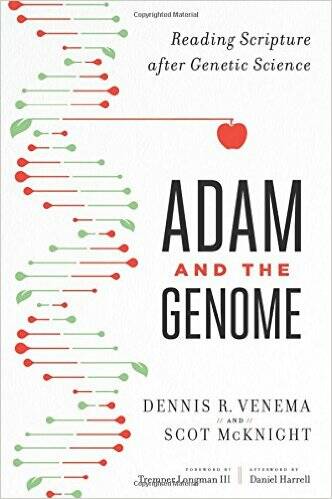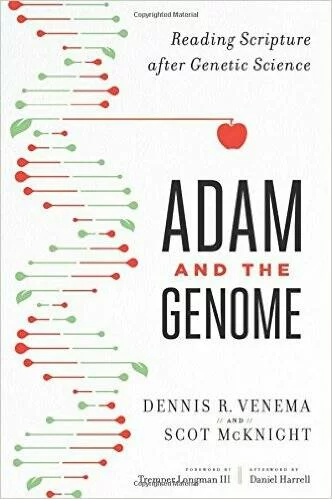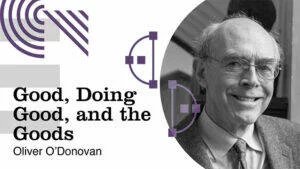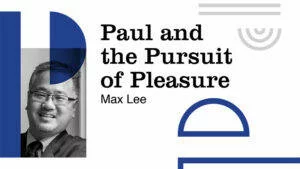Adam and the Genome reviews selected highlights in the scholarly discussion about human evolution and Scripture. In what follows I focus on Venema’s approach to arguing support for evolution, and McKnight’s claims about a literary vs. historical Adam.
Challenges with Venema’s Method
The first chapter emphasizes predictive power and independent lines of evidence as strategies for the general reader to make his or her own assessment of discussions about human evolution and the creation narrative in the Bible. One of the objections to evolutionary theory is that it cannot be tested experimentally. Venema shows that while this is true, confidence in evolutionary theory has grown because it has passed many predictions some of which are introduced (pp. 14, 17). Wisely, he does not overstate his case emphasizing with examples that a theory cannot be proved (pp. 13, 15).

Baker Academic (2017)
Confidence in a theory also increases the more independent lines of evidence converge on the same explanation. In the world of journalism this is like having independently verified news reports that agree about a certain event. Thus evidence from paleontology and embryology (pp. 17-18) as well as from fossils and DNA (p. 37) converge on the theory of evolution. Different methods of estimating the effective size of ancient populations (pp. 55, 65)—the topic central to this book—converge on a lower limit of about 10,000. Overall, Venema offers a balanced sketch of how science works in these cases.
But assessing the strength of a theory could have been made easier for the reader by distinguishing between two kinds of independence in lines of evidence. Compare a chimpanzee and a human. They are mammals and their DNA shares many nucleotide sequences. Comparing anatomy and DNA yields lines of evidence that converge on the conclusion that they have a common ancestor. These lines of evidence are methodologically independent because they use anatomical and molecular methods to obtain data. But their convergence is expected because they have a common cause, namely a common ancestor.
Confidence in human evolution would increase even further if the lines of evidence were not merely methodologically independent but also causally independent relative to each other.
Confidence in human evolution would increase even further if the lines of evidence were not merely methodologically independent but also causally independent relative to each other. As far as I know this applies currently only to the theory of biological evolution, but not to human evolution. For instance, the natural history of Hawaiian fruit flies includes three such lines of evidence. First, radioactive decay in the earth’s center produces both the force that moves the Pacific plate in a Northwestern direction and the stationary hotspot that spawns new volcanic islands as the plate moves overtop. This has produced an island chain reaching from Hawaii—the youngest—to the oldest submerged islands off the Japanese coast. Erosion offers the second line of evidence with the oldest islands eroded the most. Lastly, chromosome inversion has been used to reconstruct the evolutionary history of Hawaiian fruit fly species showing the youngest species on the youngest islands. Radioactive decay, erosion, and mutation are three mutually independent causes that converge on the same evolutionary history. Venema does not mention this distinction between methodological and causal kinds of independence in pursuing evidence for human evolution. Currently, fossil and genetic lines of evidence for human evolution are only independent methodologically. Their convergence offers reasonable support for human evolution. Estimates of minimum effective population size are strong because the different methods are causally independent.
Nucleotide Sequence of the Insulin Gene
Another way to help the reader evaluate the discussions would have been to state the assumptions made in the given methods and explanations. For example, Venema compares part of the nucleotide sequence of the insulin gene between humans, chimps, gorillas, orangutans and dogs. They turn out to be similar (Fig. 2.6, p. 31). In my view, this could be due to a law of nature according to which a given similarity is required for an insulin molecule to control blood sugar irrespective of whether it is in a dog or a human.In my view, this could be due to a law of nature according to which a given similarity is required for an insulin molecule to control blood sugar irrespective of whether it is in a dog or a human. Alternatively, natural selection may have removed all but these similar sequences because they functioned well enough to let the animal survive. Finally, similarity could be due to common ancestry. Which explanation applies? Venema argues for common ancestry because even sections of the gene without known function are similar; thus, function alone cannot explain the similarity. This points to common ancestry. But it is not clear how he arrives at this conclusion. Is he comparing the observed similarity with the similarity one would expect if the nucleotides had been arranged randomly or with the similarity required for proper function of the insulin? Moreover, laws of nature or natural selection remain possible explanations for the unexpected degree of similarity if the nonfunctional sections of the gene were to have a function that remains to be discovered. This possibility must be excluded before common ancestry can be postulated as the sole explanation.
Correct Calculations for Possible Combinations of Codons?
Due to a lack of clarity about questions asked and assumptions made, I am unable to reconstruct the calculation Venema uses to support his argument for common ancestry. He provides 531,441 as the number of possible combinations of codons that will code for the nine leucines in insulin (p. 30). In other words, given 9 items to choose from and 6 possible codons in an arrangement, there are 96 = 531,441 possible arrangements that can code for those nine leucines. But, it seems to me that the question ought to be: given 6 items to choose from (leucine codons) and 9 items in an arrangement (locations of leucine codons in insulin), how many arrangements of six codons will code for the nine leucines in the gene for insulin? That is, in how many different ways can you arrange six codons over nine leucines? The answer: 69 = 10,077,696 different arrangements each with a likelihood of 1/69. Therefore, random arrangement cannot explain the similarity of the arrangement between human, chimp, gorilla and orangutan. There must be a cause and this cause is common ancestry. This would strengthen Venema’s argument considerably. But, there is another issue. The location of each of the leucines in insulin might be critical to insulin function, but this is not considered. Perhaps all this was left out for simplicity’s sake, but then it would have been wiser to select a simpler example to show that there is more similarity than function requires.
McKnight and the Historical Adam
Common ancestry of humans and other primates as well as a human population size that has never been below several thousand are occasions for reconsidering the traditional creation narrative. McKnight presents the reader with a choice between a literary-genealogical Adam and a biological-genetic Adam. Put that way I agree that the second option must be rejected as a misuse of Scripture because it reads science into Scripture. But aren’t there more Adams than the two of McKnight’s dilemma? For one, McKnight himself cites a passage in the apocryphal book known as the Wisdom of Solomon which mentions a genealogical Adam (p. 157). He concludes that “There are elements of the so-called historical Adam present—genealogical Adam, fallen Adam—in these Jewish sources, but the historical Adam that Christians now believe in has yet to make his appearance on the pages of history” (p. 169). True, but do these “elements of the so-called historical Adam” not suggest a third category—a historical Adam in the everyday non-scholarly sense of historical? Do these “elements of the so-called historical Adam” not suggest a third category – a historical Adam in the everyday non-scholarly sense of historical?If Solomon—the likely author of the Wisdom of Solomon—could read Genesis that way, then others including Paul could as well. Why does McKnight then assert that “Paul has historicized the symbolic Adam of Genesis (p. 190)?
Further, the pre-modern Adam of patristic and medieval times would at least have been both literal and allegorical. Moreover, the Adam of the Protestant reformers can be taken as the same literal-historical Adam of the pre-moderns (that is in the everyday sense of historical). Thus a historical Adam in the everyday sense of historical is not necessarily an instance of reading science into Scripture because this Adam existed before modern science arose. It would take until after Darwin for the historical-literal Adam to be contradicted by science. When it did, Protestants could no longer resolve the conflict by resorting to a figural Adam. But a historical Adam in the everyday sense of historical is relevant for the current discussion, for instance, when he is seen as representing a group of humans. This option could resolve an apparent inconsistency. McKnight asserts both that Paul turned the symbolic Adam of Genesis 1-3 into a historical figure and that there are historical elements in Genesis 1-3. Couldn’t Paul and the authors of the Jewish tradition have incorporated those historical elements into their understanding of Adam in terms of an everyday sense of history? Further, couldn’t they have interpreted this historical Adam as also archetypal by simply reading Genesis? Perhaps in trying to show that Genesis offers no historical Adam in a way that satisfies the standards of contemporary scholarship—historical or scientific—McKnight overlooked that possibility.







Comments
Be the first one to make a comment!